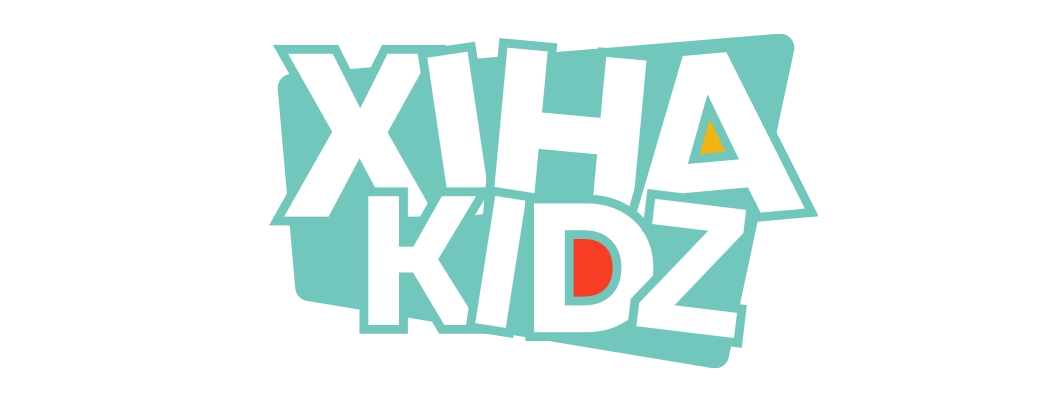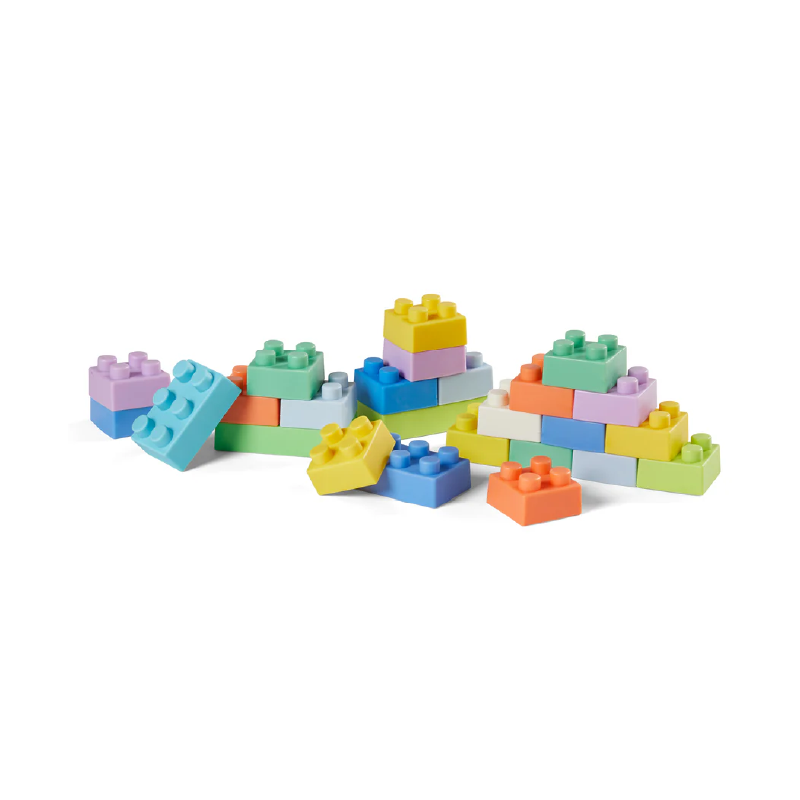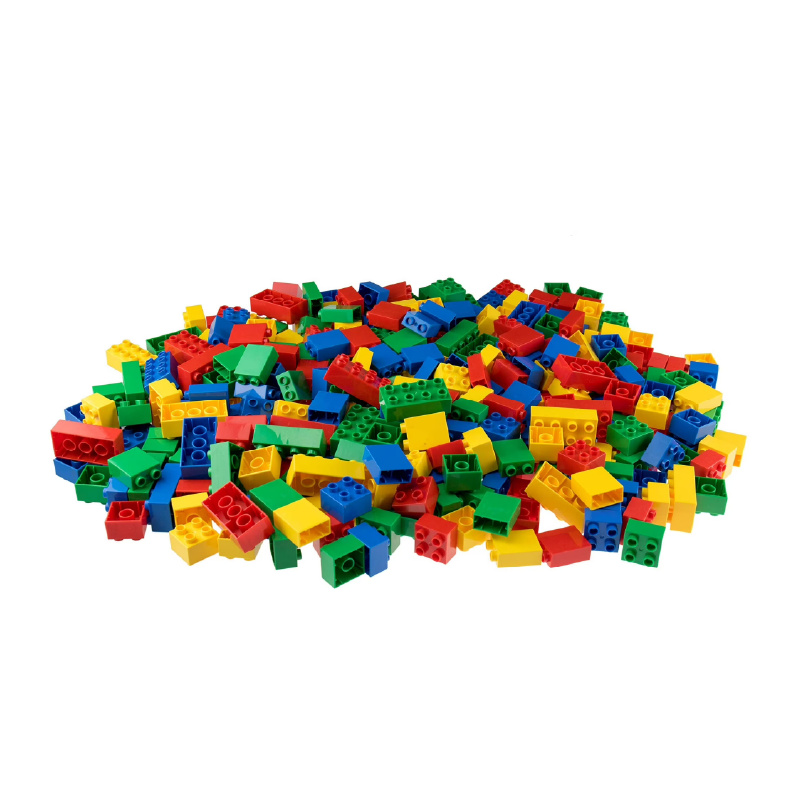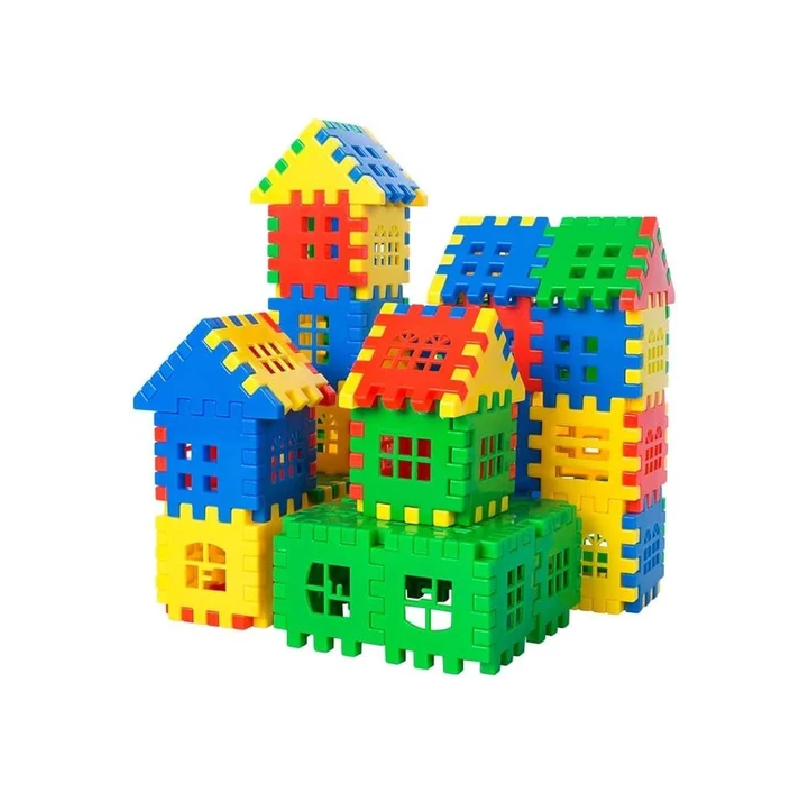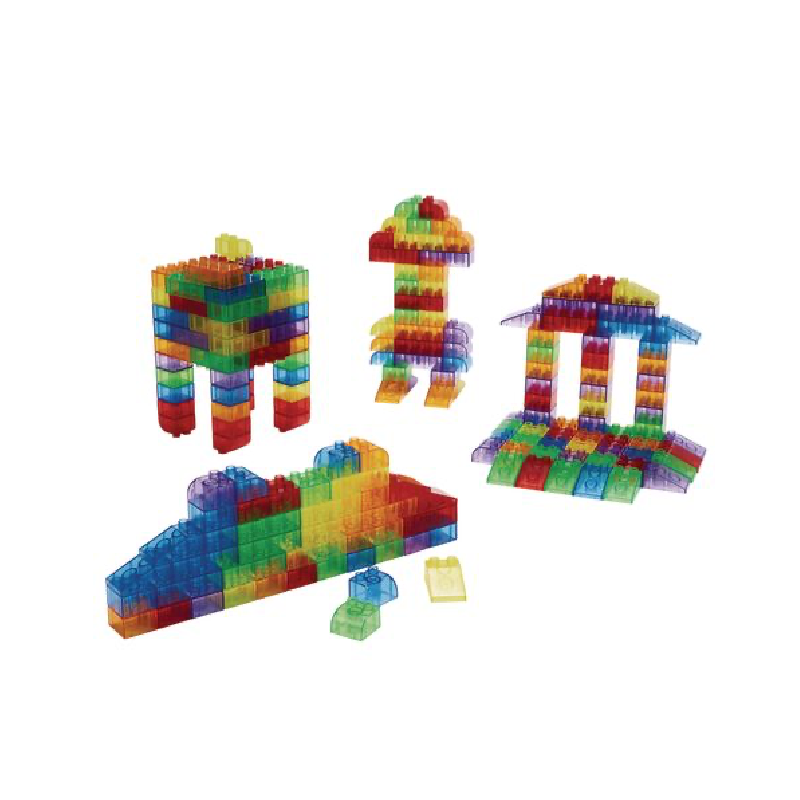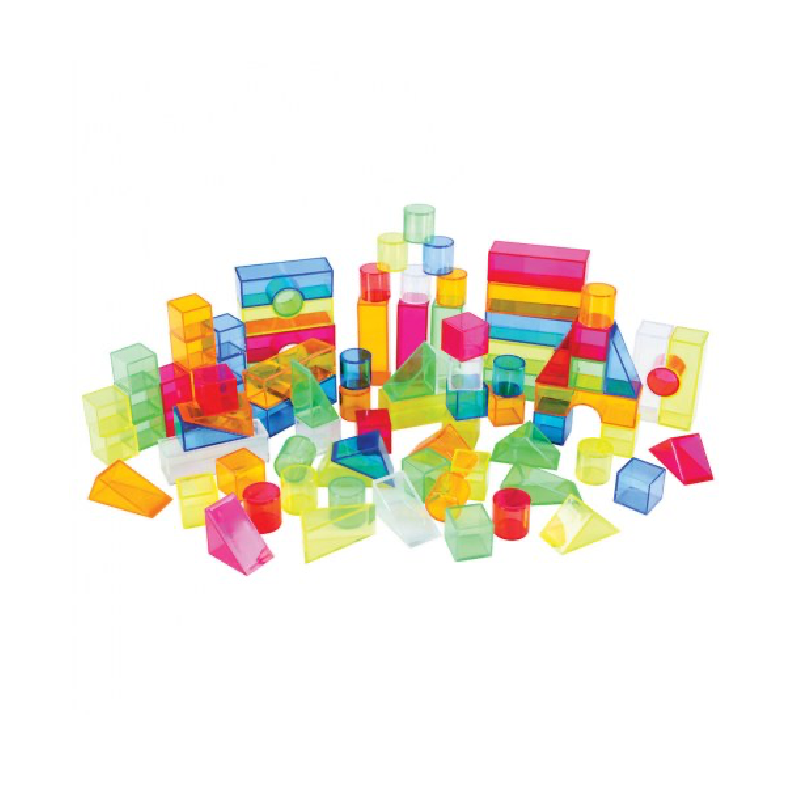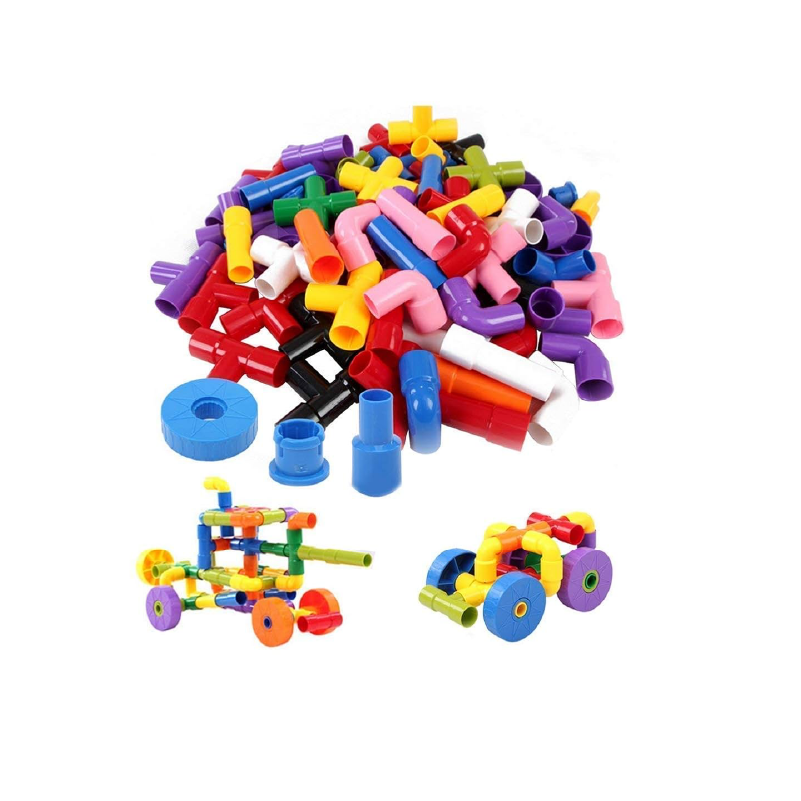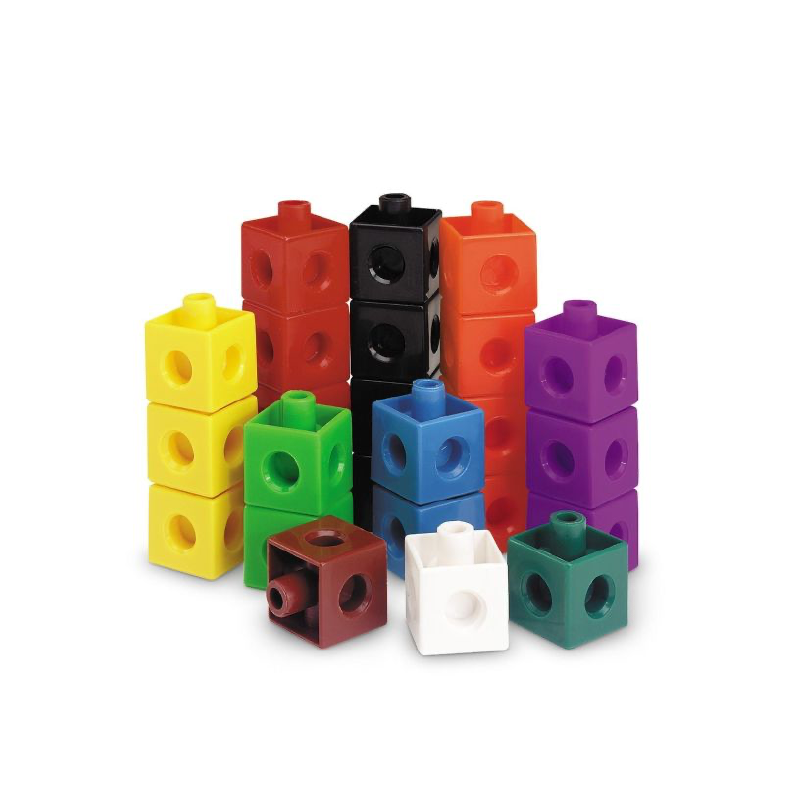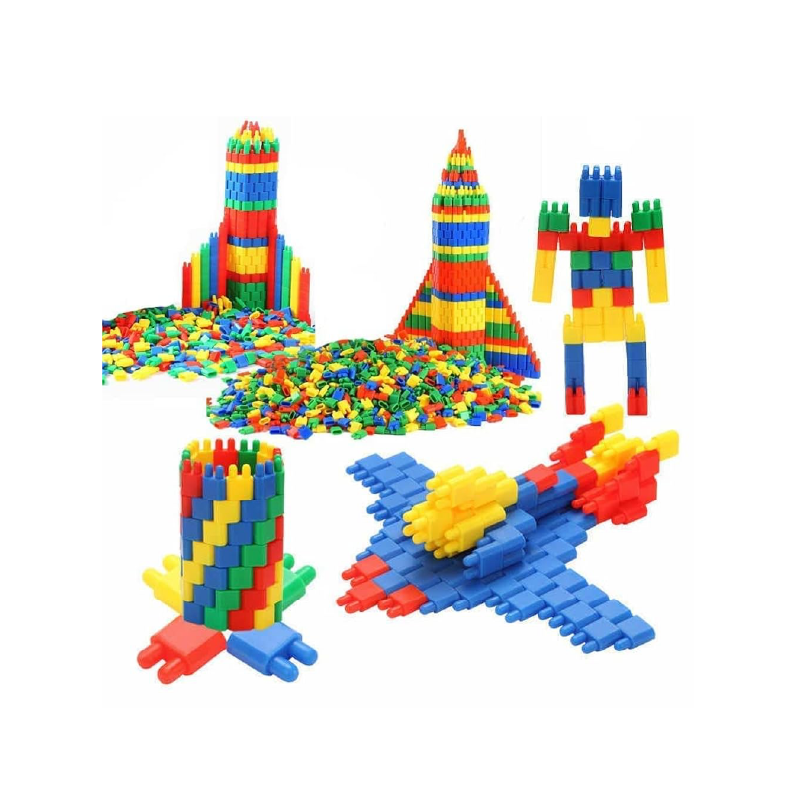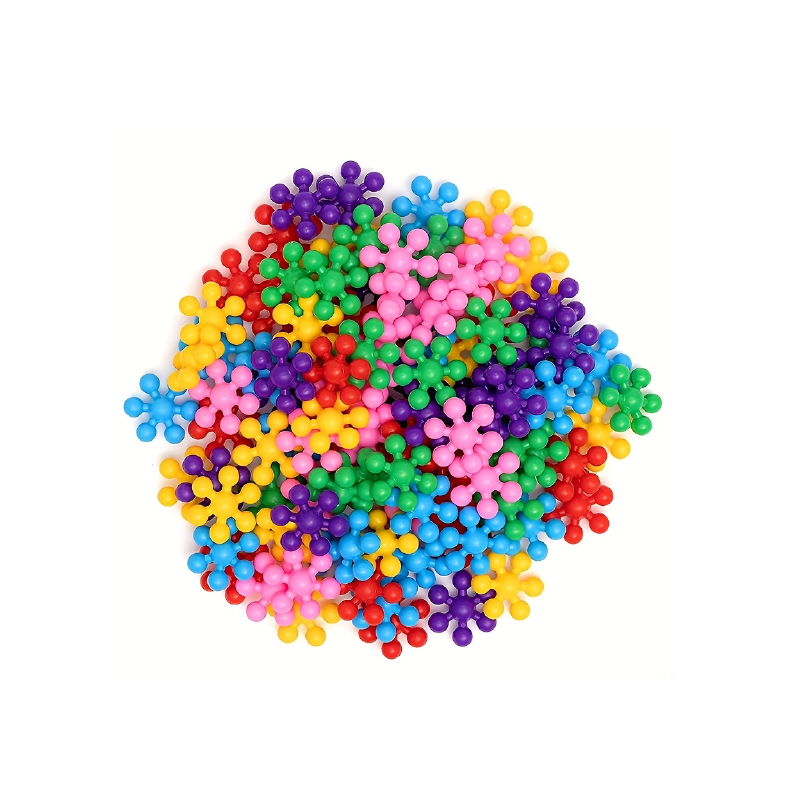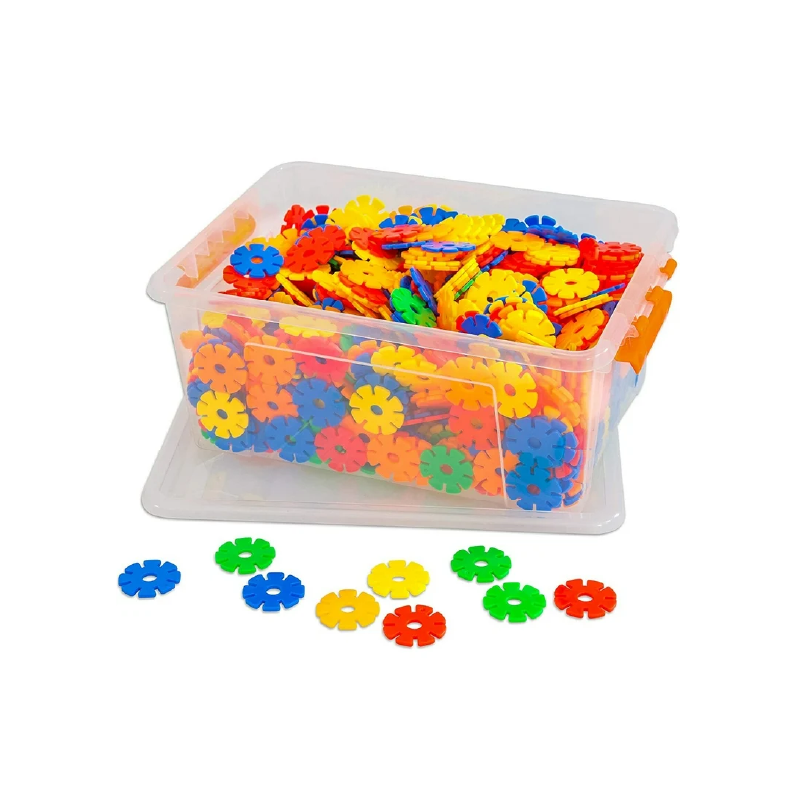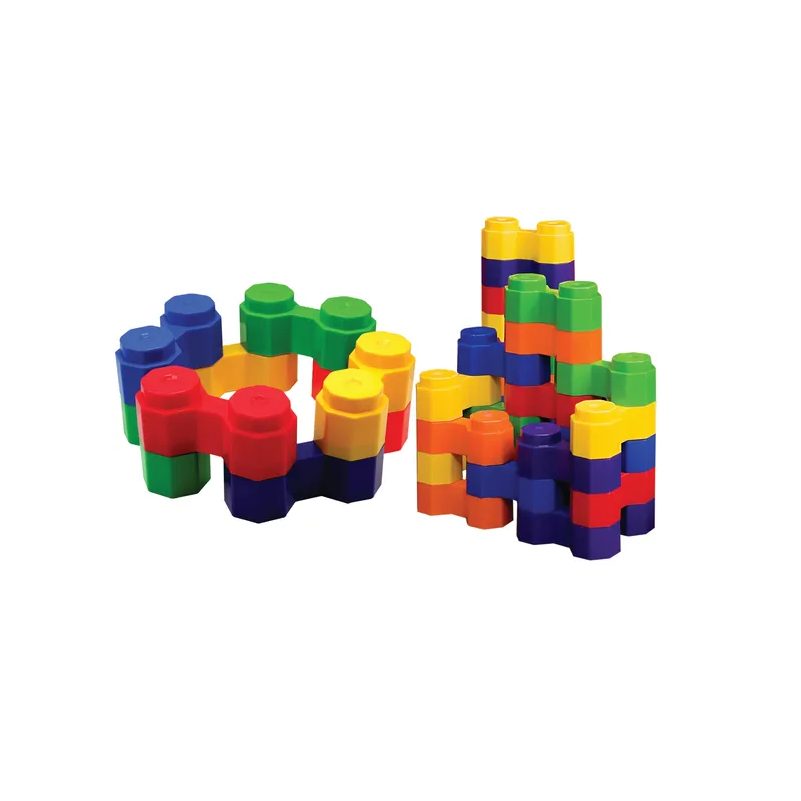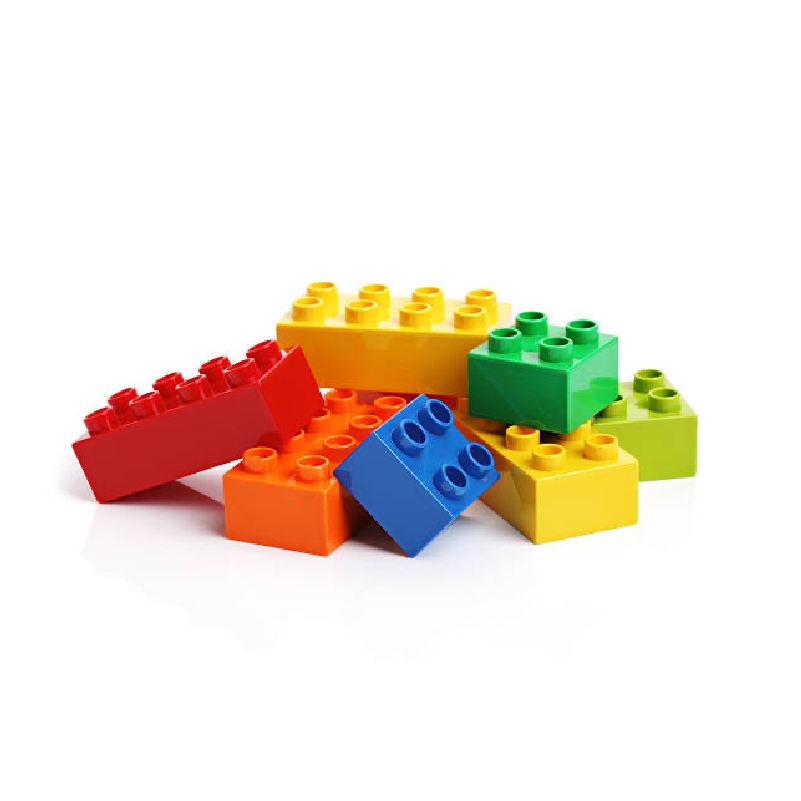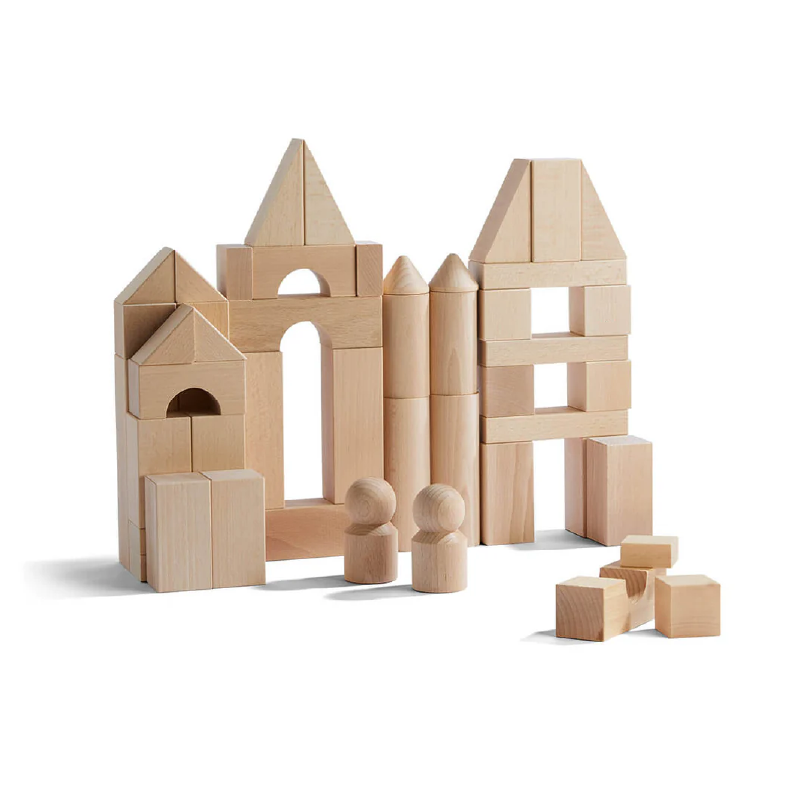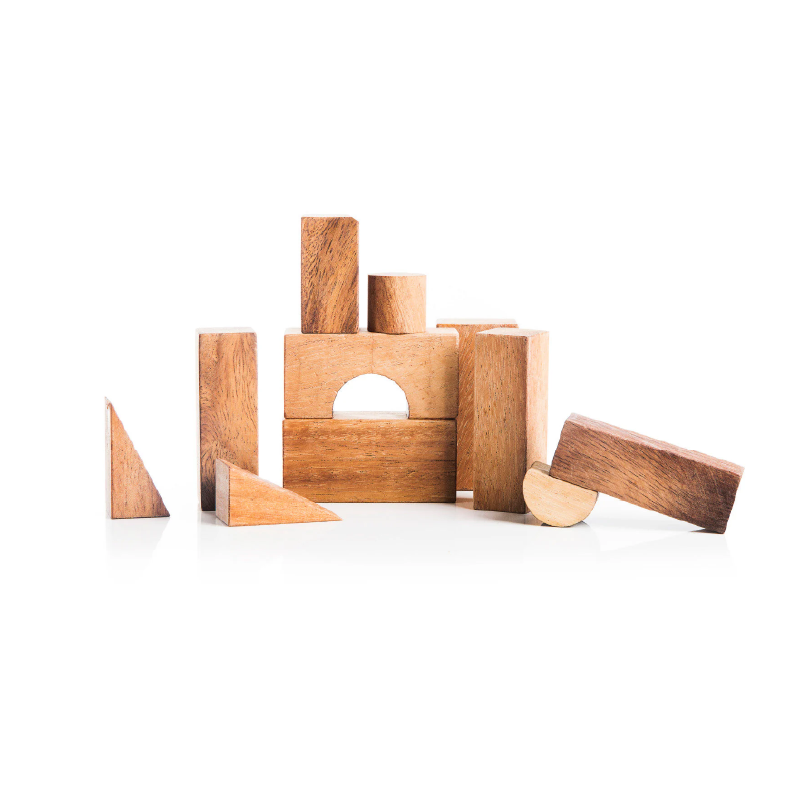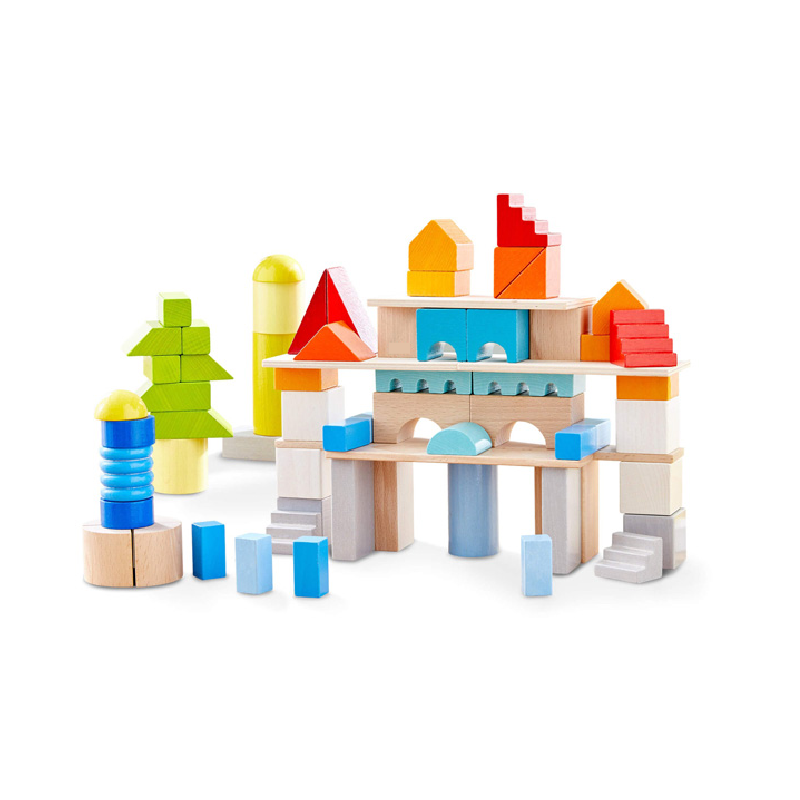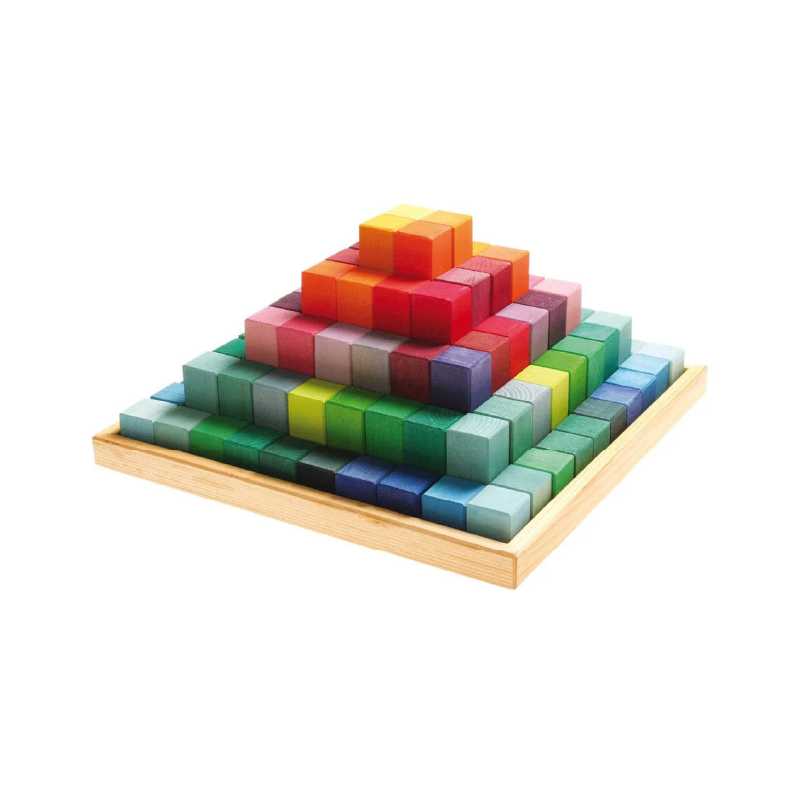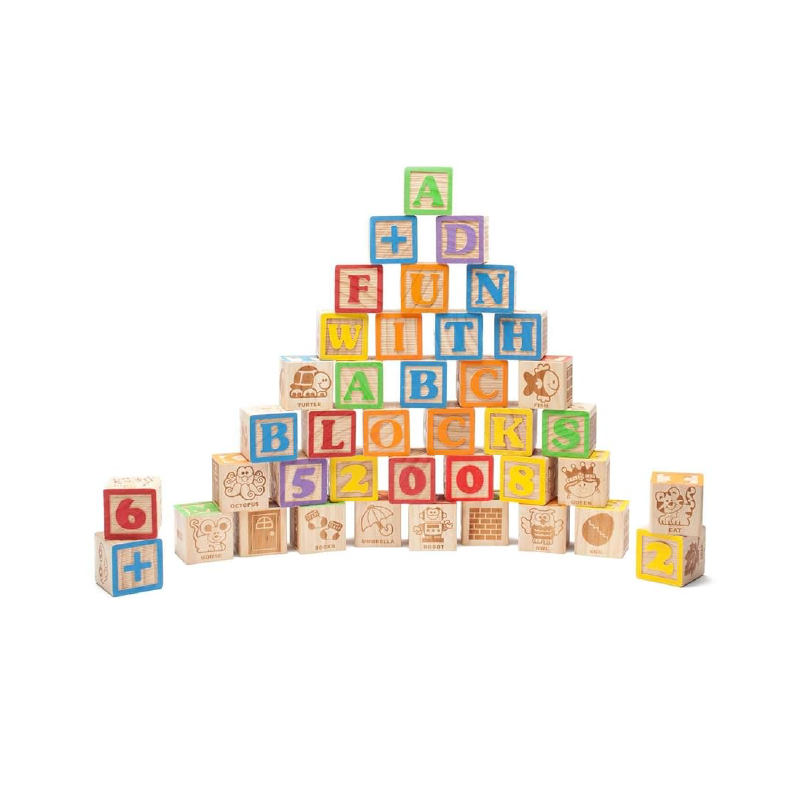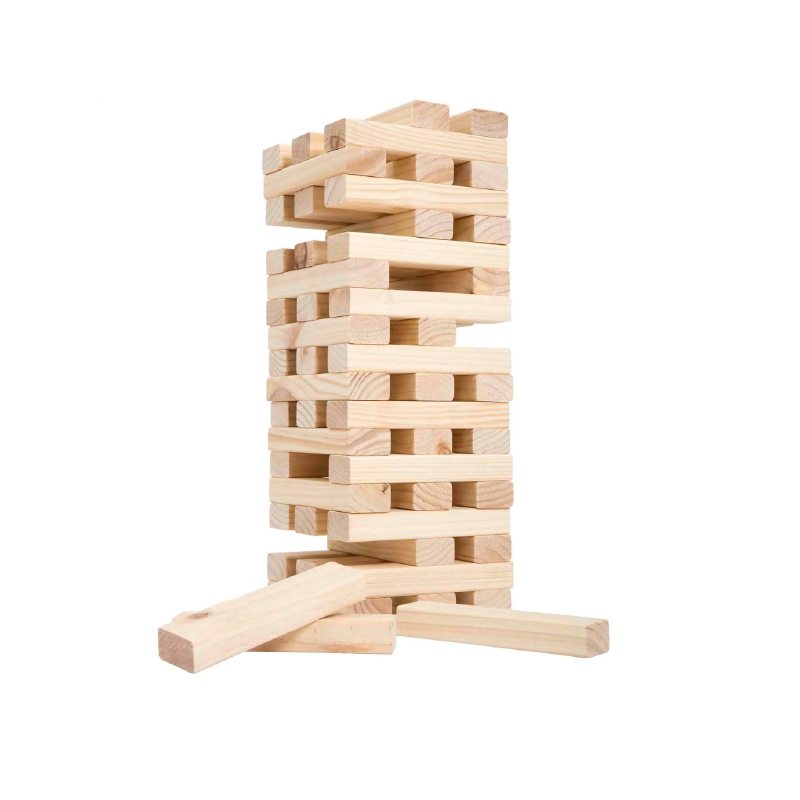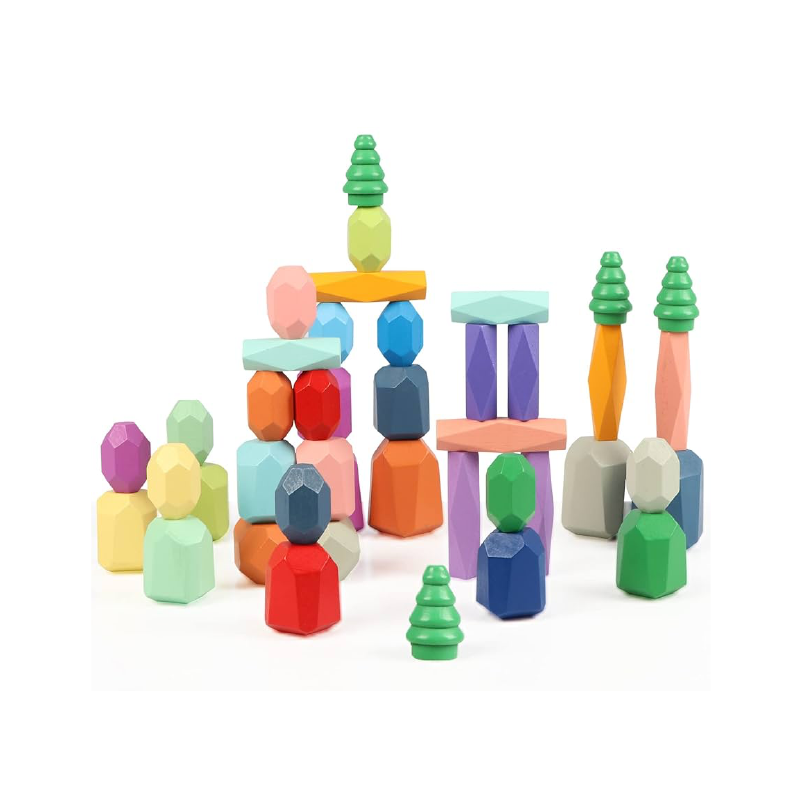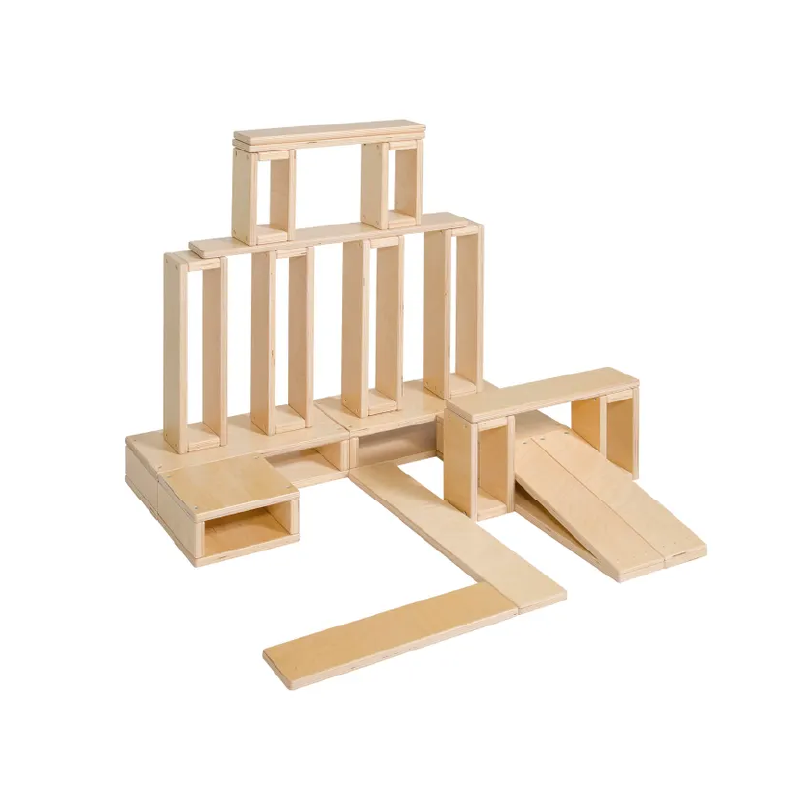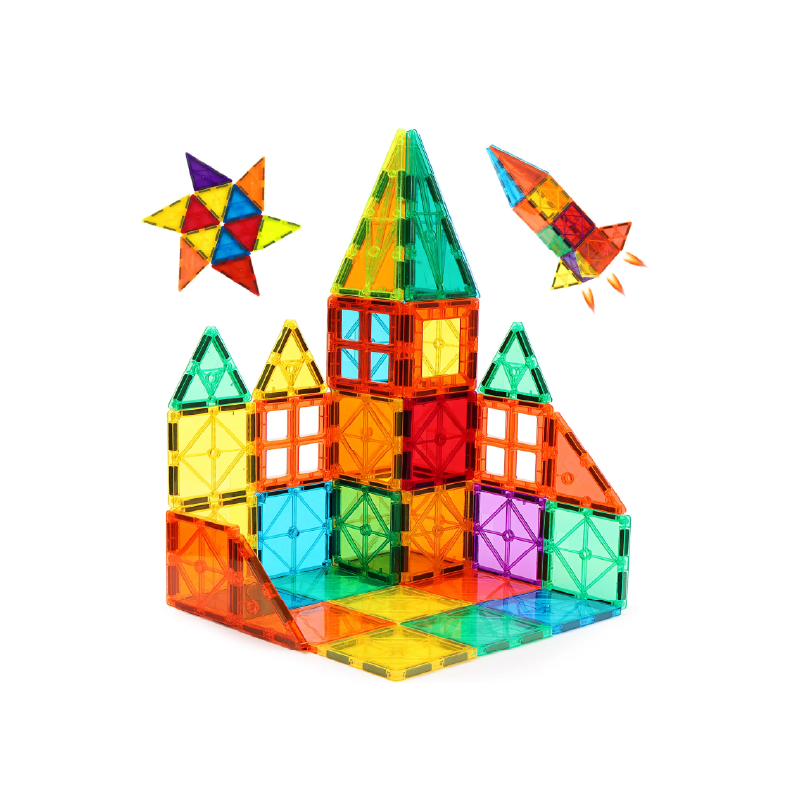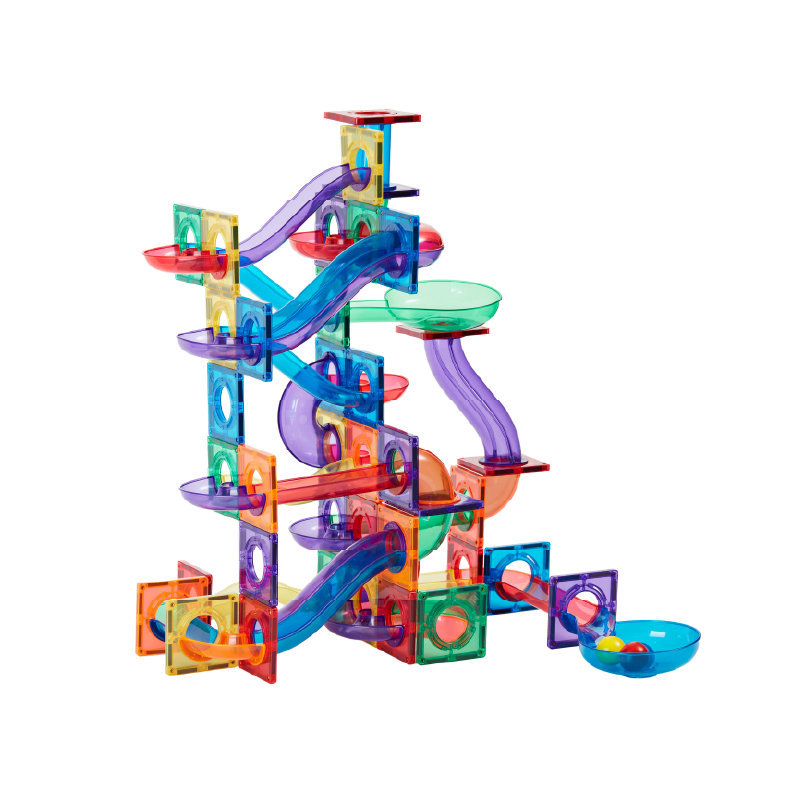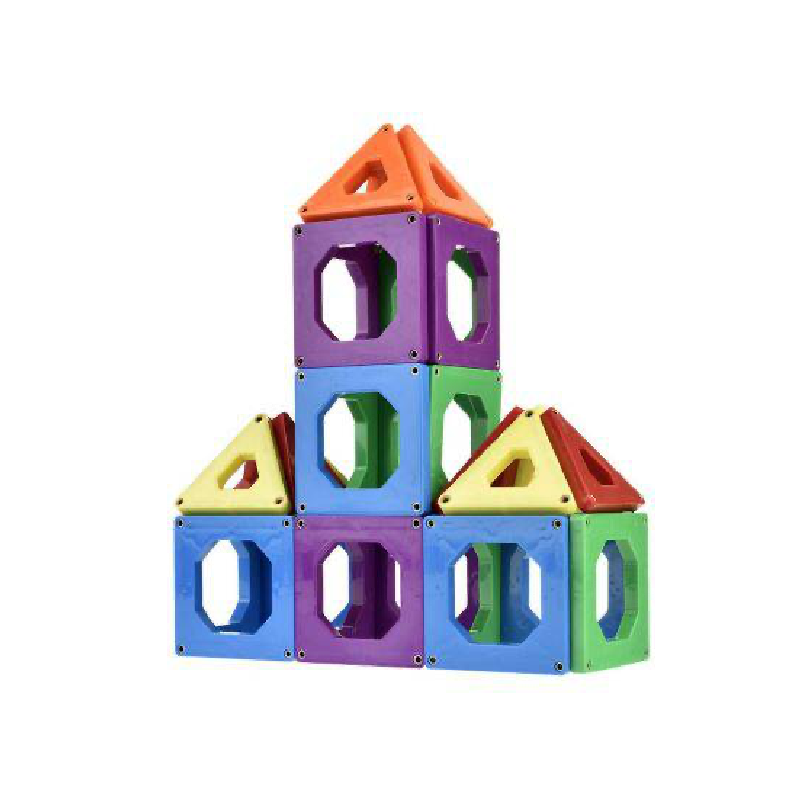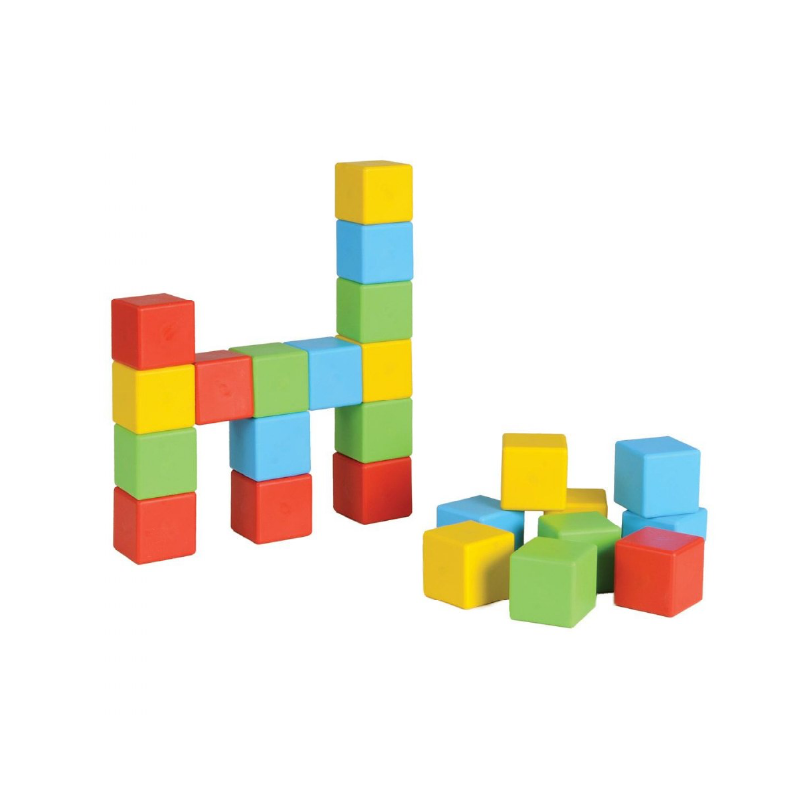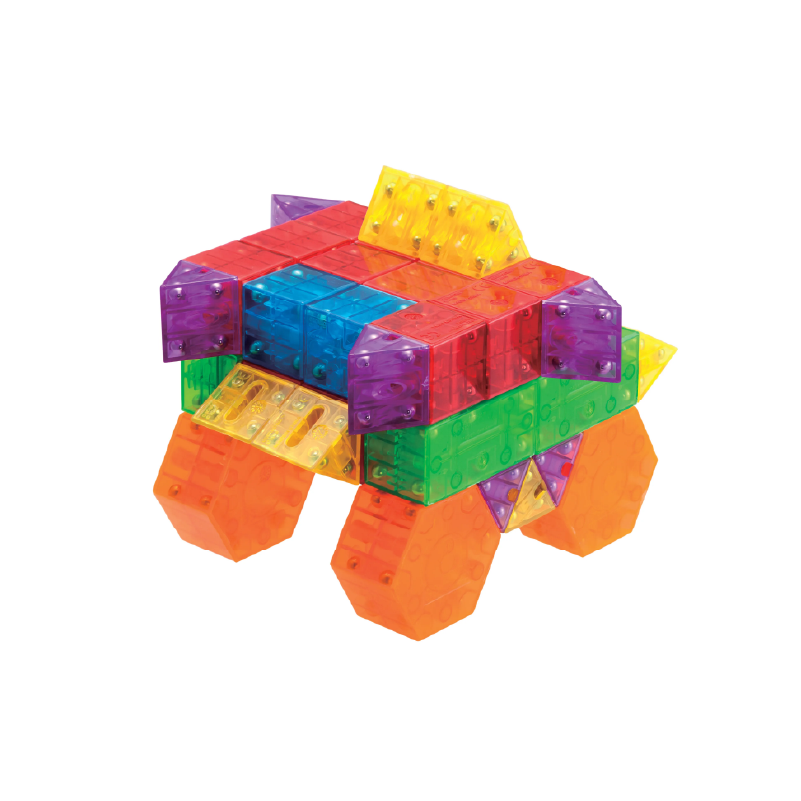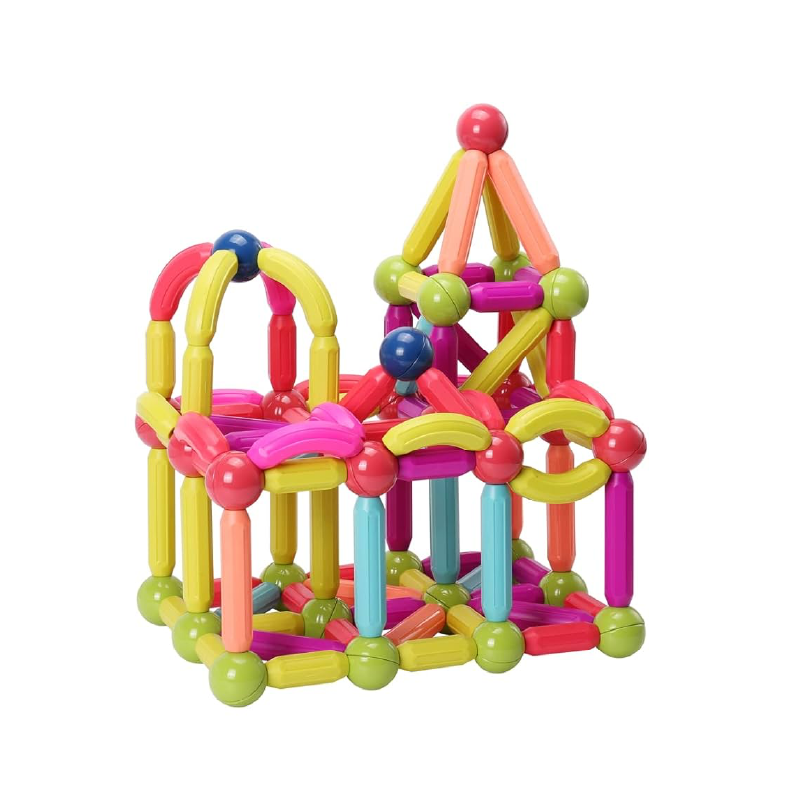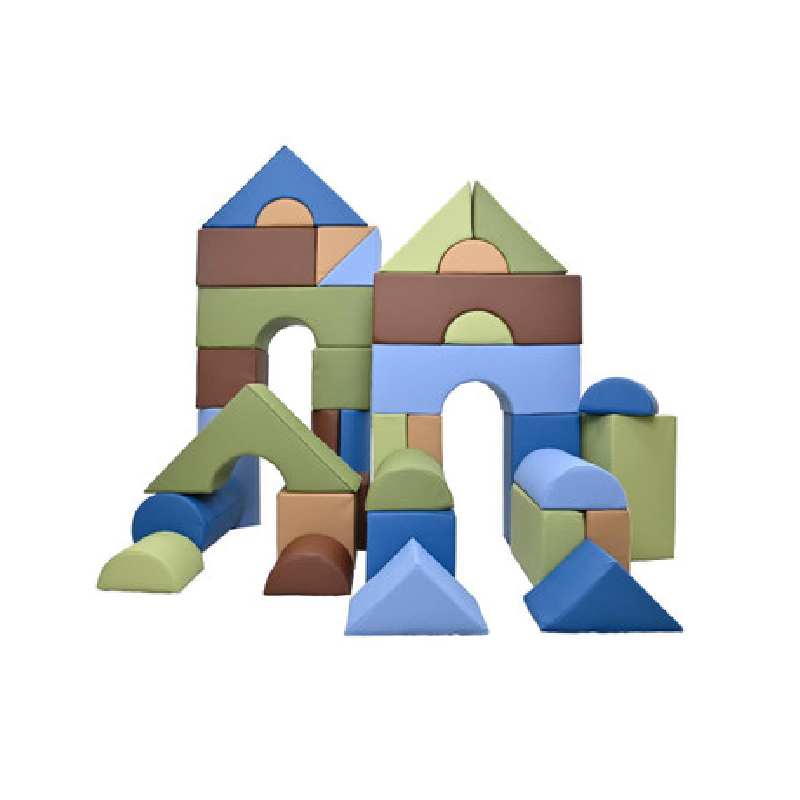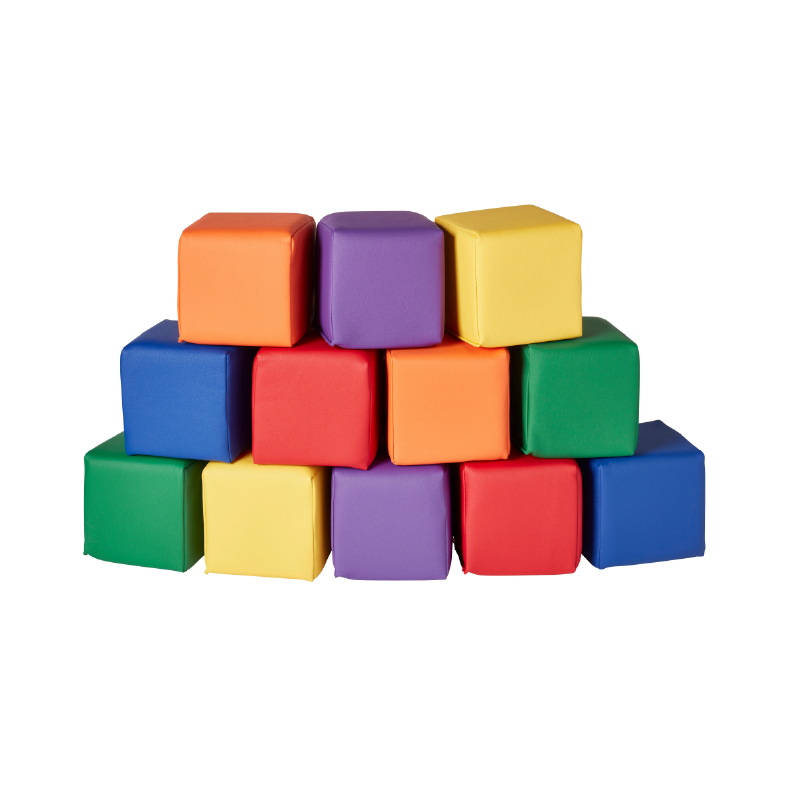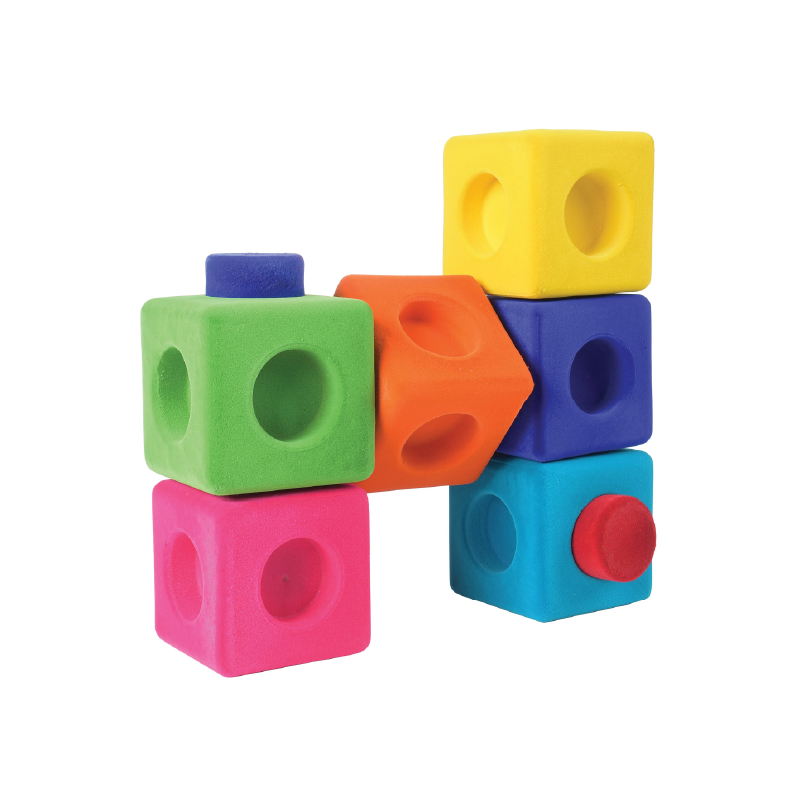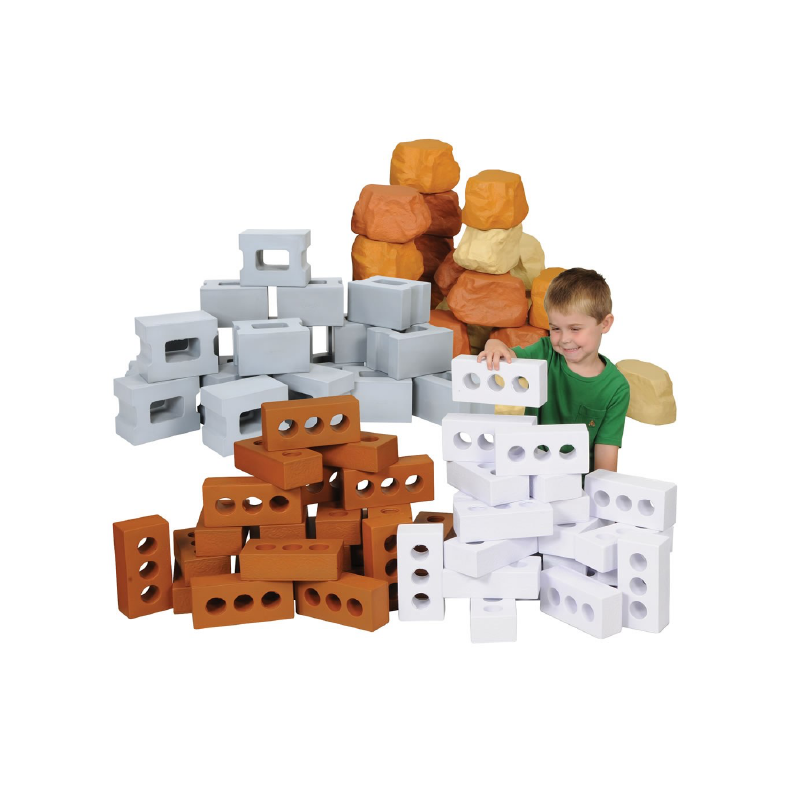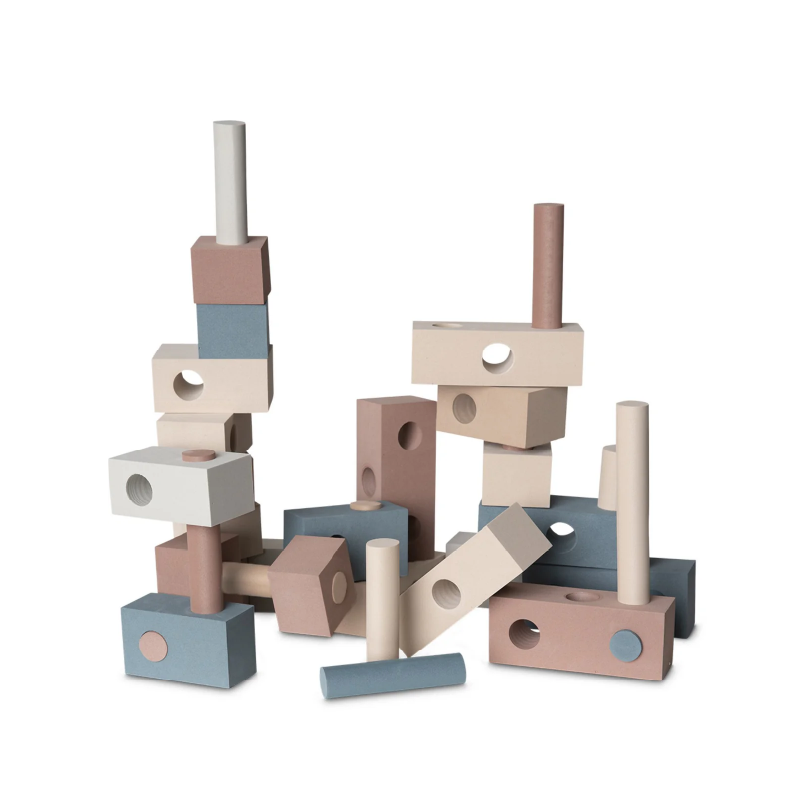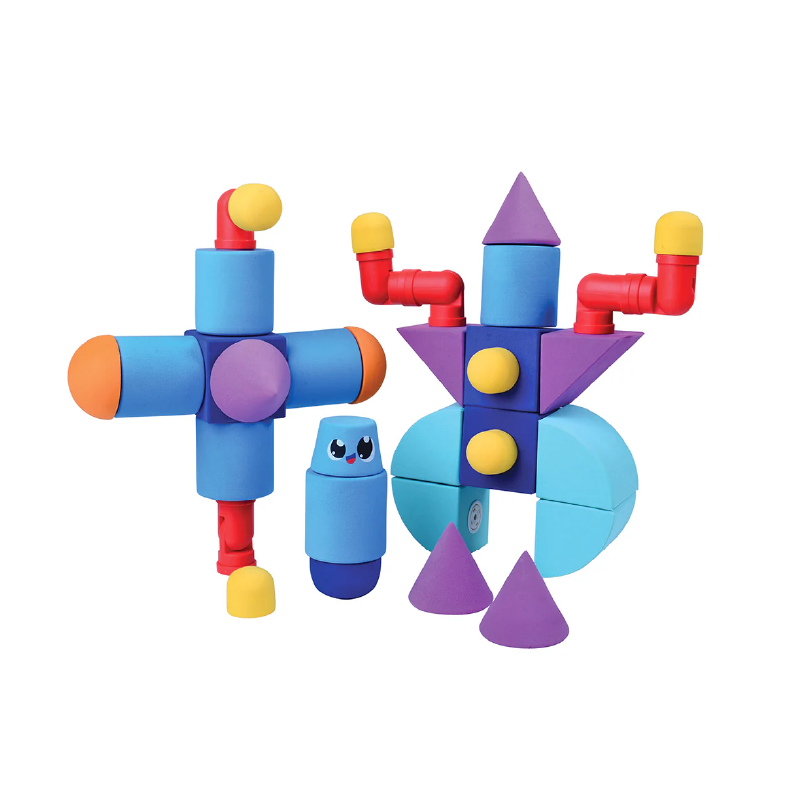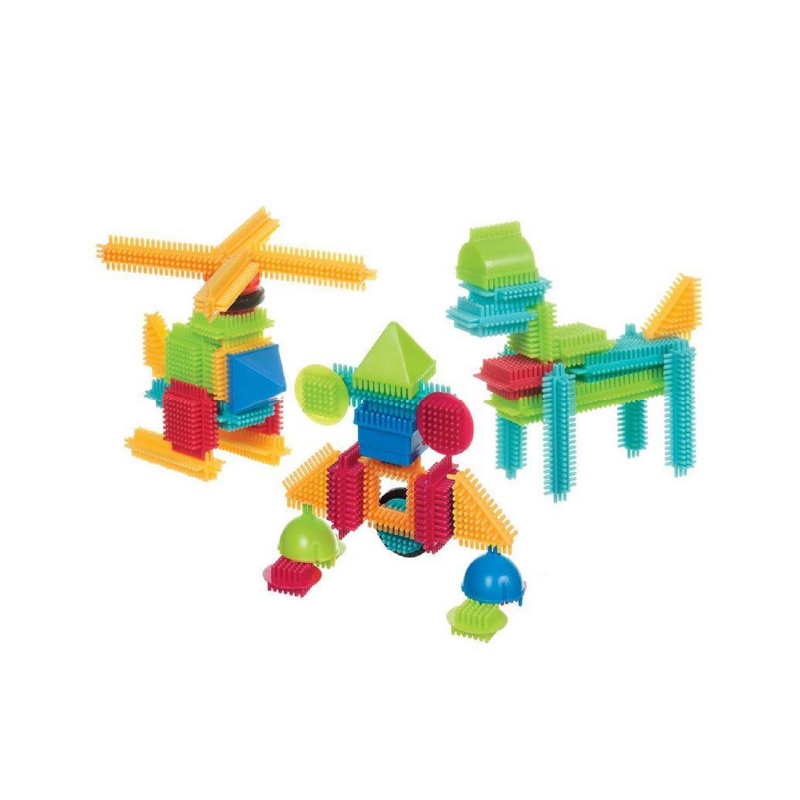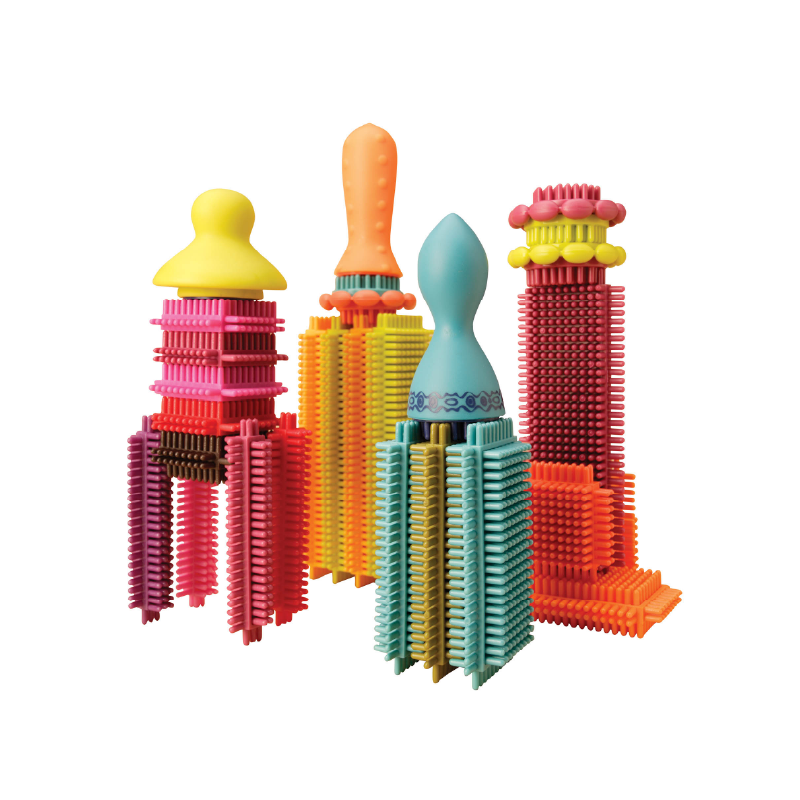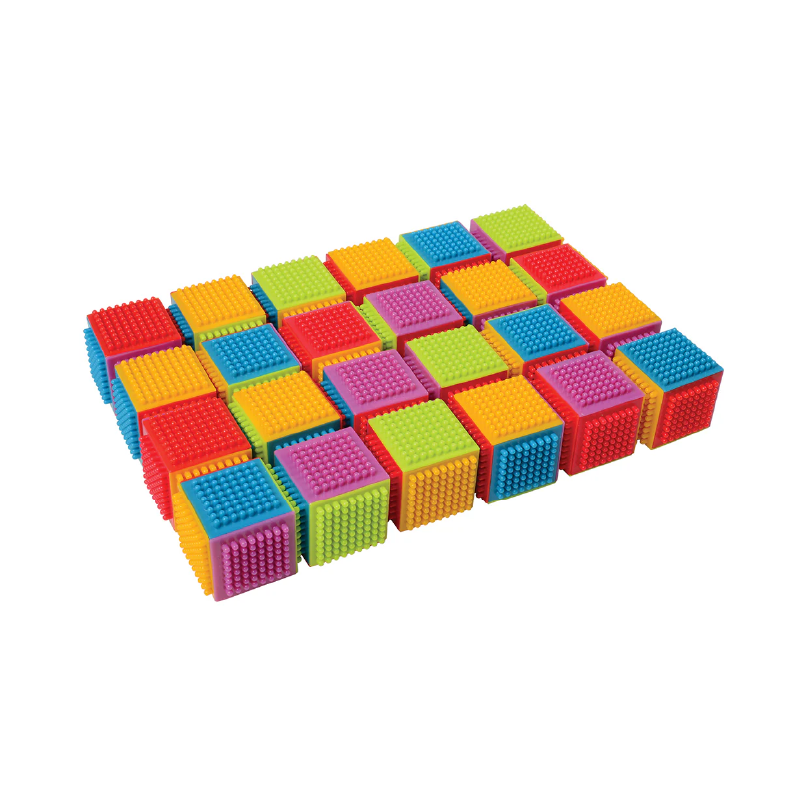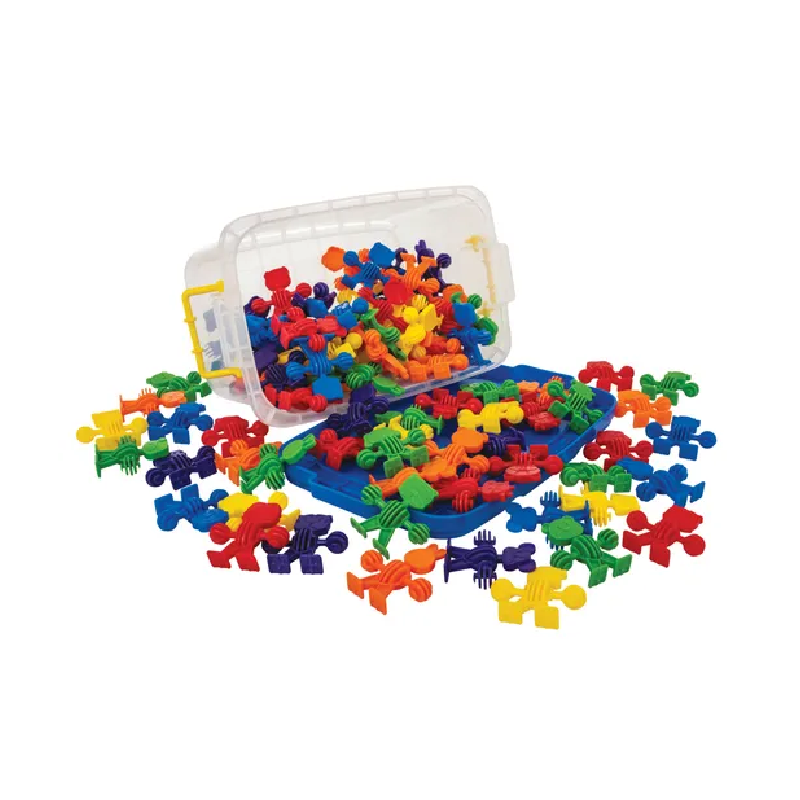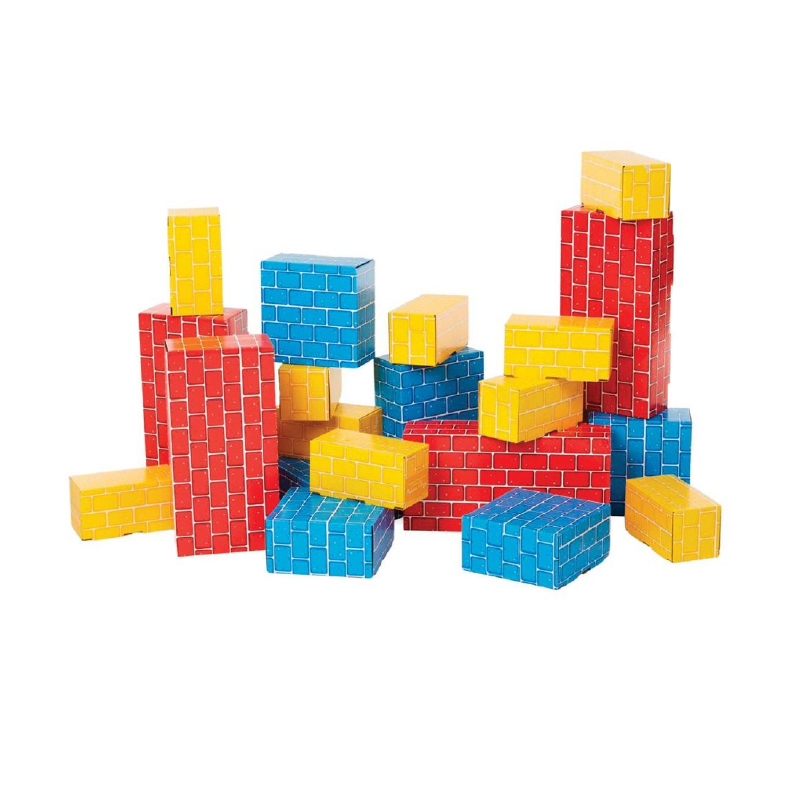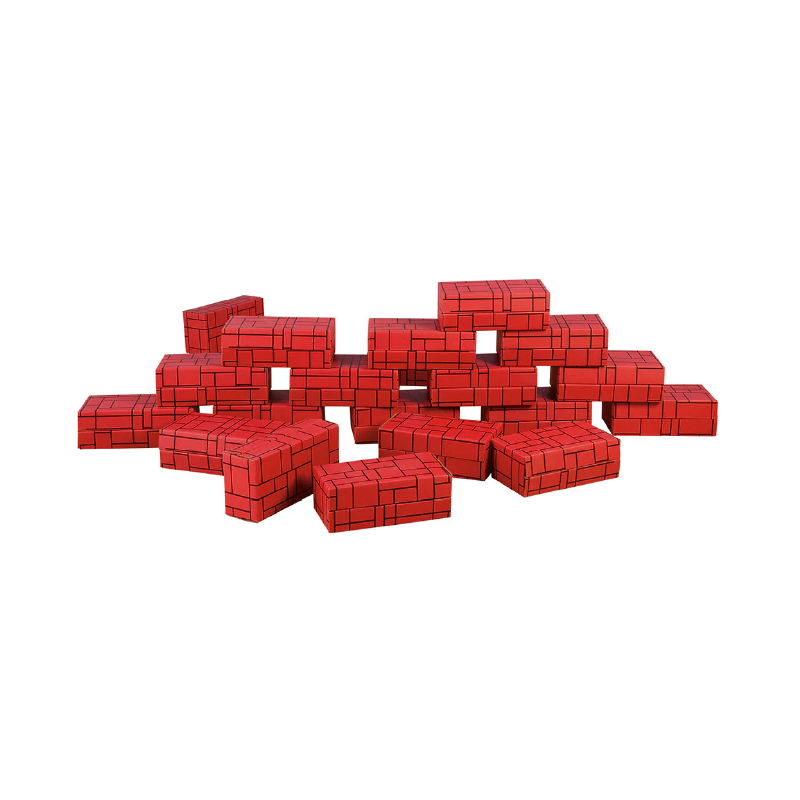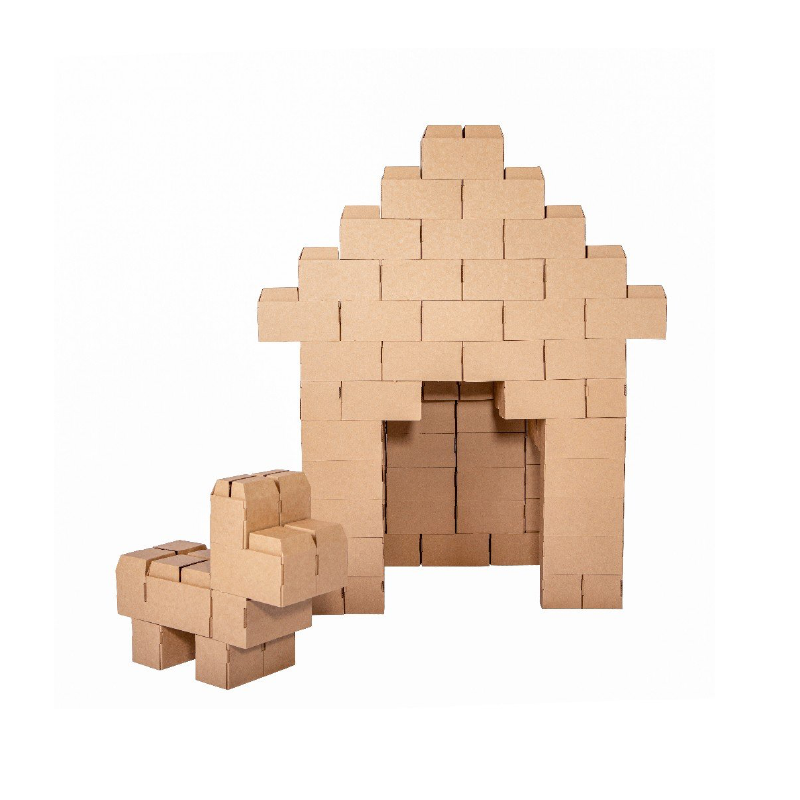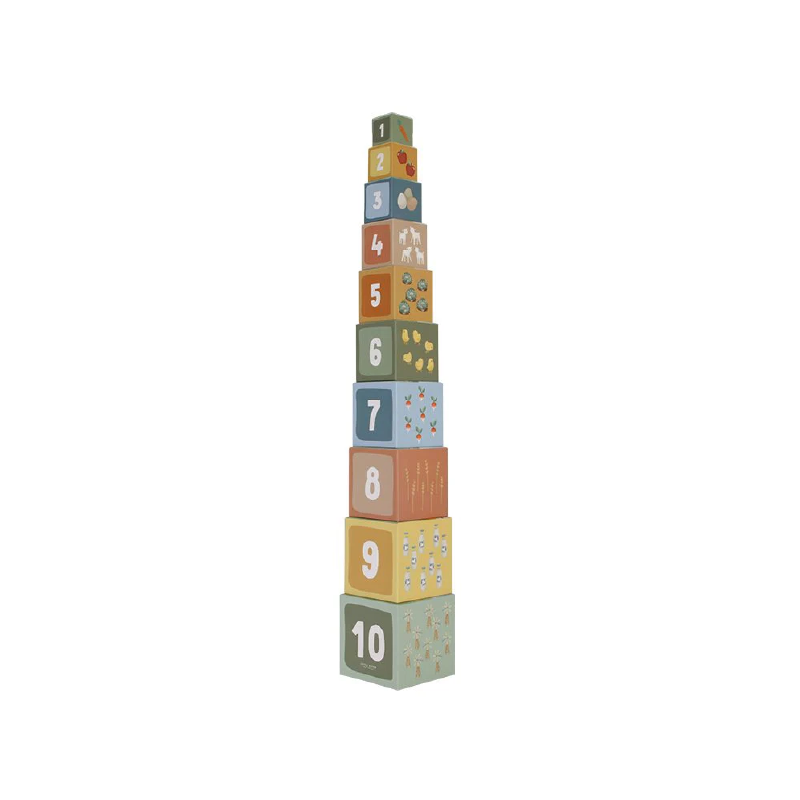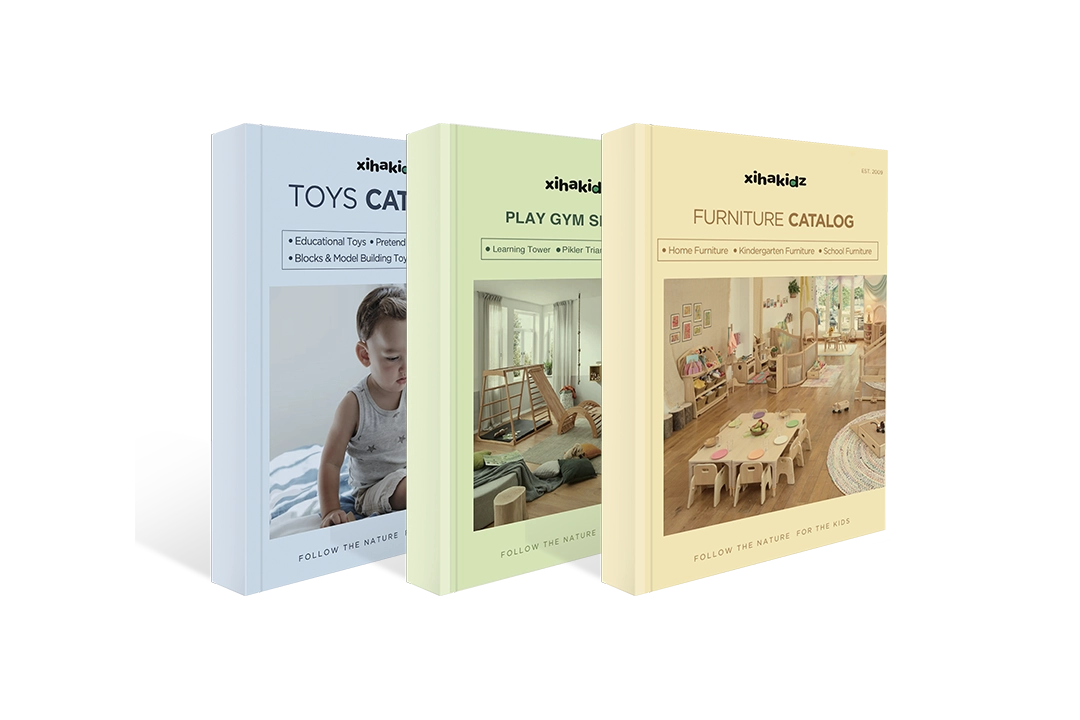Building Blocks Toys for Growing Minds
Our building blocks toys are thoughtfully designed to support hands-on learning in early education. Whether you need foam, plastic, or wooden blocks, we provide customizable solutions to fit different classroom needs. Each set is safe, durable, and crafted for daily use in preschool and daycare settings. We help schools and distributors create the ideal learning environment with flexible designs and reliable quality.
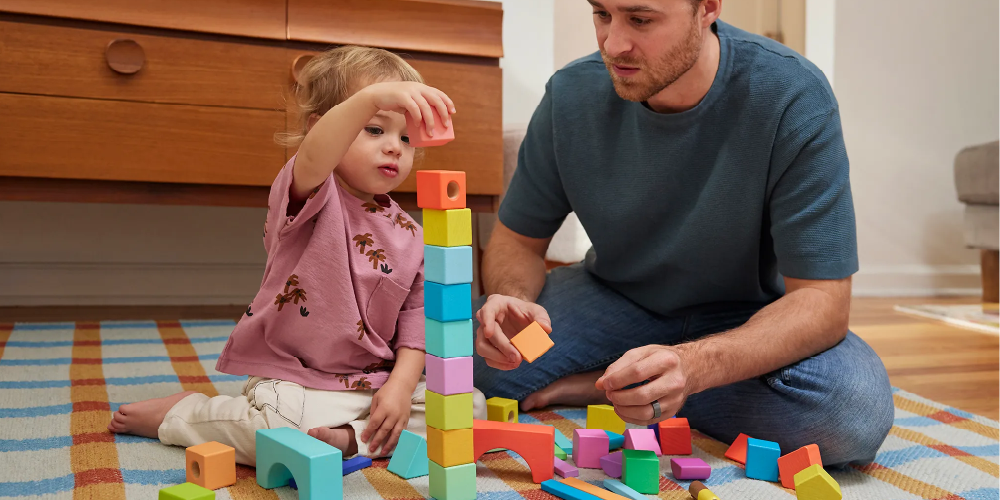
Building Blocks Toys Collections for Every Learning Environment
Our building block toys come in a wide range of sizes, colors, and styles to support different learning environments and developmental goals. Each set is carefully designed to enhance fine motor skills, spatial reasoning, and group collaboration in early childhood settings. From classic wooden blocks to vibrant foam and plastic sets, each product offers age-appropriate challenges that make learning through play both fun and effective.
Plastic Building Blocks
Plastic Building Blocks are lightweight, durable, and easy for young children to handle. They come in a variety of vibrant colors and interlocking shapes, making them perfect for imaginative free play and structured group activities. These versatile blocks support fine motor development, spatial reasoning, and teamwork as children explore different ways to build and create.
Wooden Building Blocks
Crafted from high-quality hardwood, our wooden blocks offer a natural tactile experience that promotes sensory exploration and spatial reasoning. Their open-ended design encourages children to build, stack, and create while developing core cognitive and motor skills. Perfect for Montessori and Reggio classrooms.
Magnetic Building Blocks
Magnetic blocks introduce basic physics and polarity through interactive construction. Children can connect and rotate pieces to form creative structures, strengthening problem-solving skills and hand-eye coordination. These blocks are great for guided STEM activities and collaborative play.
Foam Building Blocks
Foam Building Blocks provide a soft and safe building option for younger children or sensory-friendly classrooms. Lightweight and easy to manipulate, they allow children to construct larger structures without risk of injury. These blocks support active play, gross motor skills, and cooperative problem-solving while offering a fun and approachable introduction to building concepts.
Bristle Building Blocks
Bristle blocks feature textured surfaces that make it easy for children to push, pull, and connect parts without needing precision. This tactile feedback improves grip control and sensory awareness. These blocks are especially effective in supporting younger learners or children with sensory needs.
Cardboard Building Blocks
Cardboard blocks are lightweight and eco-friendly, yet strong enough to build tall structures. Their large size encourages gross motor development, cooperative play, and imaginative storytelling. These blocks are a popular choice for creating life-size constructions in open-ended learning environments.
Material Comparison for Building Blocks Toys
| 材料 | 料金 | 耐久性 | Maintenance | 最適 |
|---|---|---|---|---|
| プラスチック | Medium | High | Easy to wipe clean | Daily classroom use, STEM and motor skill training |
| Foam | Low to Medium | Moderate | Very easy to clean, water resistant | Toddler rooms, soft play areas, sensory development |
| 厚紙 | Very Low | Low | Replaceable, not water resistant | Large-scale creative play, budget-friendly solutions |
| Wooden | High | Very High | Dry cloth cleaning, avoid moisture | Montessori, premium classrooms, open-ended learning |
Tips: Each material offers unique advantages depending on your classroom setup and budget. If you prioritize safety for toddlers, foam blocks are a great choice. For long-term use and a natural aesthetic, wooden blocks provide the highest value. Plastic offers the best balance of cost, durability, and educational function, while cardboard blocks serve well in creative and large-format play spaces at minimal cost.
Customizable Building Blocks Toys for Your Unique Needs
As a professional manufacturer of preschool furniture and toys, Xiha Kidz offers flexible customization options to help clients create building block toys that meet specific educational, branding, and classroom design needs.
Sizes and Shapes
We can design blocks in a variety of dimensions and shapes to support different age groups, motor skill levels, and learning objectives. Blocks can be made in standard or custom sizes, with options for stacking, interlocking, sensory features, or oversized soft play.
Materials and Finishes
Choose from a wide range of materials including eco-friendly wood, durable plastic, lightweight foam, or magnetic components. We also offer customized surface finishes for added safety, sensory experience, and classroom aesthetics.
Colors and Themes
Colors play an essential role in early learning. You can customize colors based on teaching themes or classroom aesthetics. We also support color grouping for learning purposes, such as sorting or categorization activities.
Packaging and Branding
Make your products stand out with customized packaging and private labeling. We offer logo printing, personalized instructions, and educational content inserts to enhance your brand presence and provide added value to your clients or parents.
Benefits of Building Blocks Toys for Child Development
Building Blocks Toys are more than simple play items. They are powerful educational tools that support a wide range of essential skills during early childhood. Through building, exploring, and experimenting with different block types, children develop creativity, problem-solving abilities, physical coordination, and social confidence.
Enhances Creativity and Imagination
Building Blocks Toys encourage children to think independently and explore limitless possibilities. As they design towers, cities, vehicles, or unique structures, they learn how to express their ideas and transform imagination into reality. This type of open-ended play builds innovative thinking and encourages children to approach challenges creatively.
Strengthens Cognitive and Problem-Solving Skills
When children build, they constantly plan, test, and adjust their designs. This process improves critical thinking and strengthens their ability to solve problems. They also begin to understand basic concepts of balance, structure, symmetry, and spatial awareness, all of which are essential cognitive skills.
Develops Fine Motor Skills and Hand-Eye Coordination
Handling different shapes and sizes of blocks helps children refine their motor skills and improve coordination. As they lift, stack, and connect pieces, they build strength and control in their hands and fingers. These abilities support future tasks such as writing, drawing, and using classroom tools with precision.
Promotes Social and Communication Skills
Promotes Social and Communication Skills模倣遊びとは、子どもたちが現実世界で見た行動を観察し、真似することです。例えば、誰かが食事の準備をしているのを見て、子どもは料理の真似をしたり、親の仕事のやり方を真似したりします。模倣遊びは、子どもたちの運動能力、記憶力、そして日常の習慣や社会的な行動への理解を育むのに役立ちます。
Builds Confidence and Independence
Finishing a construction project gives children a strong sense of achievement and self-worth. They gain confidence by seeing their ideas take shape and learn perseverance when faced with challenges. These successes encourage independence and motivate them to take on new tasks with curiosity and determination.
Supports Early STEM Learning
Building Blocks Toys naturally introduce children to basic principles of science, technology, engineering, and mathematics. They experiment with structure and stability, discover how different shapes connect, and explore patterns and spatial relationships. These hands-on experiences build a strong foundation for future STEM education.
Tips for Choosing the Right Building Blocks Toys
With so many types of building blocks available, selecting the right ones for your classroom or center requires careful consideration. The right choice depends on your learning goals, age group, environment, and teaching philosophy. Below are practical tips to guide your decision.
Set a Clear Budget Range
Before choosing materials or quantities, define your overall budget. Foam and cardboard blocks are generally more affordable, while wood and magnetic sets offer higher durability but come at a higher cost. Balance cost with longevity and educational value.
Consider the Age and Skill Level of Children
Choose block sizes and shapes that match the developmental stage of your students. Younger children need larger, easy-to-grasp blocks for safety and basic coordination. Older preschoolers may benefit from smaller or more complex pieces that support detailed construction.
Think About the Learning Objectives
Determine whether your main goal is to develop motor skills, support STEM learning, or encourage imaginative play. For example, magnetic blocks are ideal for exploring structure and polarity, while wooden blocks support open-ended creativity and spatial thinking.
Evaluate the Classroom Environment
Look at the available space, flooring, and storage options. Foam blocks are great for soft play zones, while plastic or wooden blocks are better for structured learning areas. Make sure the block materials align with your safety and cleaning requirements.
Choose Materials That Align with Daily Use
Consider how often the toys will be used and how much wear they need to withstand. Plastic and wood are highly durable for frequent classroom play. Foam and cardboard may be more appropriate for light use or specific learning centers.
Look for Certified Safety and Quality
Always check if the products meet recognized safety standards such as EN71 or ASTM. Non-toxic finishes, smooth edges, and reliable construction are essential for safe, long-term use in educational settings.
Match with Your Teaching Philosophy
Montessori, Reggio Emilia, and traditional classrooms may each favor different styles of blocks. Select products that reflect your curriculum and encourage the type of play you want to promote, whether it’s self-directed exploration or guided building tasks.
Look for Versatility in Use
Choose building blocks that can support multiple learning goals across different age groups. A versatile set can be used for solo play, group collaboration, math activities, or storytelling. This maximizes long-term value and reduces the need for frequent replacements.
Building Blocks Toys by Age Group
Selecting the right Building Blocks Toys is easier when you understand what children need at each stage of development. The right choice will match their abilities, interests, and learning goals, helping them grow while having fun.
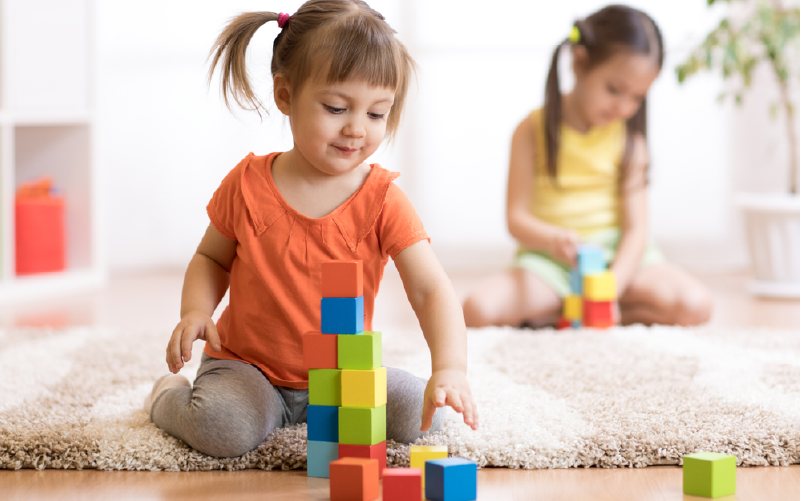
Infants and Toddlers (1–3 years)
At this stage, children are exploring the world through touch, movement, and simple cause-and-effect experiences. Their motor skills are still developing, so the focus should be on safety, size, and sensory engagement. Blocks should be large, lightweight, and easy to grasp. Bright colors and soft textures help stimulate curiosity and support early hand-eye coordination. Building play should remain simple, allowing children to stack, knock down, and explore shapes without frustration.
Best choice: Large soft blocks, oversized plastic blocks, basic sensory building sets.
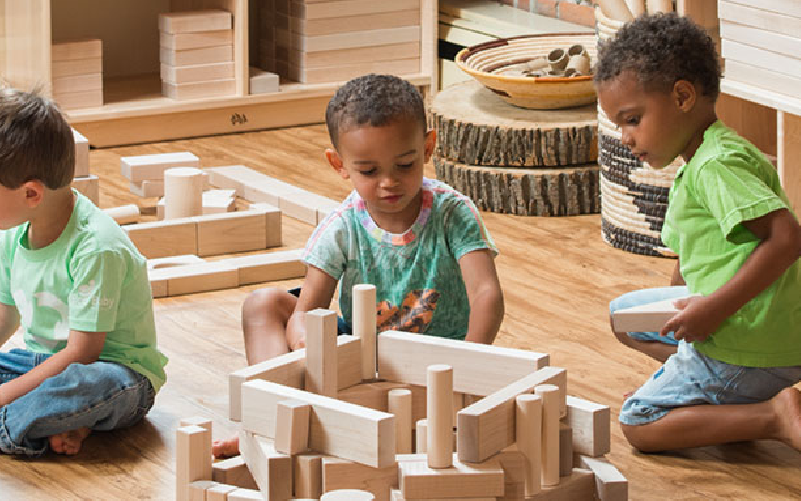
Preschoolers (3–5 years)
Children now have improved coordination and are ready for more open-ended play. They begin to combine pieces intentionally, create simple structures, and explore how shapes fit together. Building activities also start to include problem-solving and social interaction as they build together with peers. Sets with different shapes, colors, and accessories encourage creativity, storytelling, and cooperation. This stage is about imagination and discovery rather than perfection.
Best choice: Medium-sized wooden blocks, colorful plastic block sets, themed building collections.
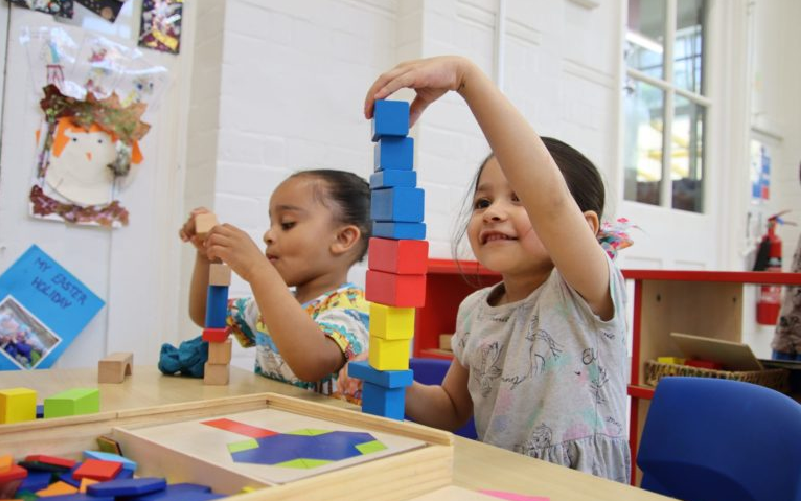
Early School Age (5–7 years)
At this point, children are ready for structured building tasks that require planning and sequencing. They can follow simple instructions, design their own projects, and experiment with balance, stability, and symmetry. Building play becomes a tool for developing logical thinking and early STEM skills. Children also begin to show pride in their creations, which boosts confidence and persistence. Choosing sets that offer variety and complexity keeps them challenged and engaged.
Best choice: Interlocking block sets, magnetic building toys, beginner STEM construction kits.
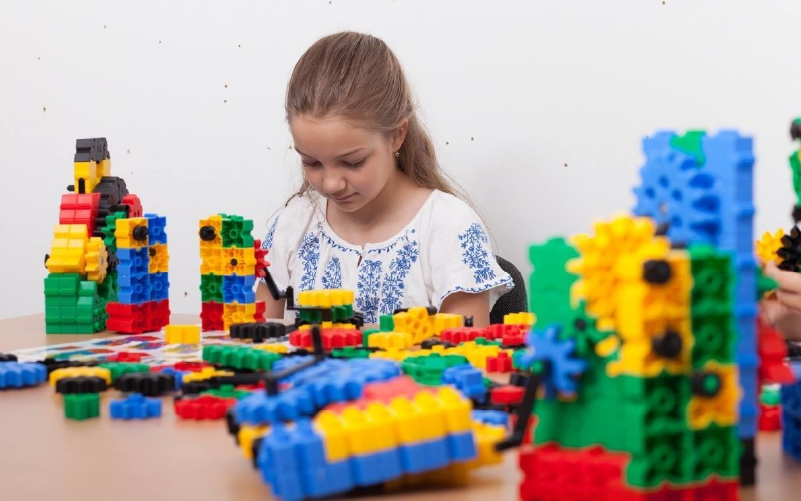
Older Children (7+ years)
Older children seek deeper challenges and more meaningful projects. They can plan multi-step constructions, follow detailed instructions, and create realistic or imaginative designs. Building becomes a platform for problem-solving, critical thinking, and creative expression. Projects may include buildings, vehicles, bridges, or complex themed worlds. At this stage, building toys are not just playthings but powerful tools for innovation and exploration.
Best choice: Advanced construction kits, engineering-focused sets, and large-scale project building systems.
Cleaning and Maintenance of Building Blocks Toys
Proper care extends the life of your building blocks and ensures a safe play environment. Different materials require different cleaning methods. Follow the suggestions below to keep your block toys clean, hygienic, and classroom-ready.
1. Regular Cleaning
Frequent cleaning helps remove dust, dirt, and fingerprints from everyday use. Wipe each block with a soft cloth dampened with warm water after play sessions. For a deeper clean, use a mild soap and water solution once a week. Rinse thoroughly and allow the blocks to air dry completely before storing them. This simple routine keeps the toys looking new and ready for daily use.
2. Deep Cleaning and Disinfection
A more thorough cleaning is recommended once a month, especially in classrooms, daycare centers, or shared play areas. Use a child-safe disinfectant or a mixture of water and white vinegar to gently wipe each block. This removes bacteria and viruses without damaging the material. Avoid strong chemical cleaners, as they can harm surfaces, fade colors, or leave residues that are unsafe for children.
3. Proper Storage
Good storage practices are just as important as cleaning. Keep Building Blocks Toys in a clean, dry area to prevent mold and damage. Use bins, baskets, or storage boxes with lids to protect them from dust. Separate sets by type or size to make playtime more organized and easier for children to access.
4. Routine Maintenance Checks
Inspect blocks regularly for signs of wear, damage, or loose parts. Remove any chipped, broken, or cracked pieces immediately to maintain a safe play environment. If the toys are used heavily in classrooms, schedule monthly inspections to ensure everything remains in good condition.
5. Care by Material
Plastic Blocks Plastic blocks are easy to clean with mild soap and warm water. Use a soft cloth or sponge to wipe each surface. For larger sets, soak briefly in a tub and air dry thoroughly. Avoid harsh chemicals that may damage color or surface finish.
Foam Blocks Foam blocks should be cleaned gently with a damp cloth and mild detergent. Do not submerge in water, as it may cause swelling or shape loss. Let the blocks air dry completely before storage. Use regularly in low-moisture areas for longer life.
Wooden Blocks: Wipe wooden blocks with a dry or slightly damp cloth to remove dust and dirt. Do not soak or expose them to excess moisture. Natural finishes may benefit from occasional polishing with child-safe wood oil. Always store in a dry, ventilated space.
Cardboard Blocks: Cardboard blocks are not water-resistant, so avoid any liquid cleaning. Use a dry brush or cloth to remove surface dust. If a block is damaged, replace it to avoid collapse during play. Store away from humidity and direct sunlight.
よくある質問
What age are Building Blocks Toys suitable for?
Building Blocks Toys are designed for a wide range of ages, starting from around 1 year old. Large, soft blocks are ideal for toddlers who are developing motor skills, while more detailed and complex sets are suitable for older children who enjoy challenging construction projects. Always check the recommended age on the product to ensure safety and proper skill development.
Are Building Blocks Toys safe for young children?
Yes. High-quality Building Blocks Toys are made from non-toxic materials and designed with smooth edges and safe finishes. It is important to choose sets that are age-appropriate and to regularly check for damaged or broken pieces to maintain safety during play.
What are Montessori blocks?
Montessori blocks are specific educational materials designed to support sensory development, spatial reasoning, and visual discrimination. The four classic types are The Pink Tower, The Brown Stairs, Knobbed Cylinder Blocks, and The Red Rods. These materials help children refine their senses, understand size and dimension, and build concentration through hands-on exploration.
How do building block toys connect to STEM?
Building block toys support STEM learning by helping children explore structure, patterns, measurement, and cause-effect relationships through hands-on play. As they build, test, and adjust their creations, they develop skills in problem-solving, logical thinking, and spatial awareness. This playful experience introduces core concepts in science, engineering, and early mathematics in a way that feels natural and engaging.
What are the 7 stages of block play?
- Exploration: Touching, carrying, and exploring blocks.
- Stacking: Building simple towers or rows.
- Bridging: Spanning spaces with blocks.
- Enclosures: Creating closed shapes or areas.
- Patterns and Symmetry: Making balanced and repeated designs.
- Early Representation: Building simple structures and naming them.
- Later Representation: Creating complex, detailed, and imaginative constructions.
